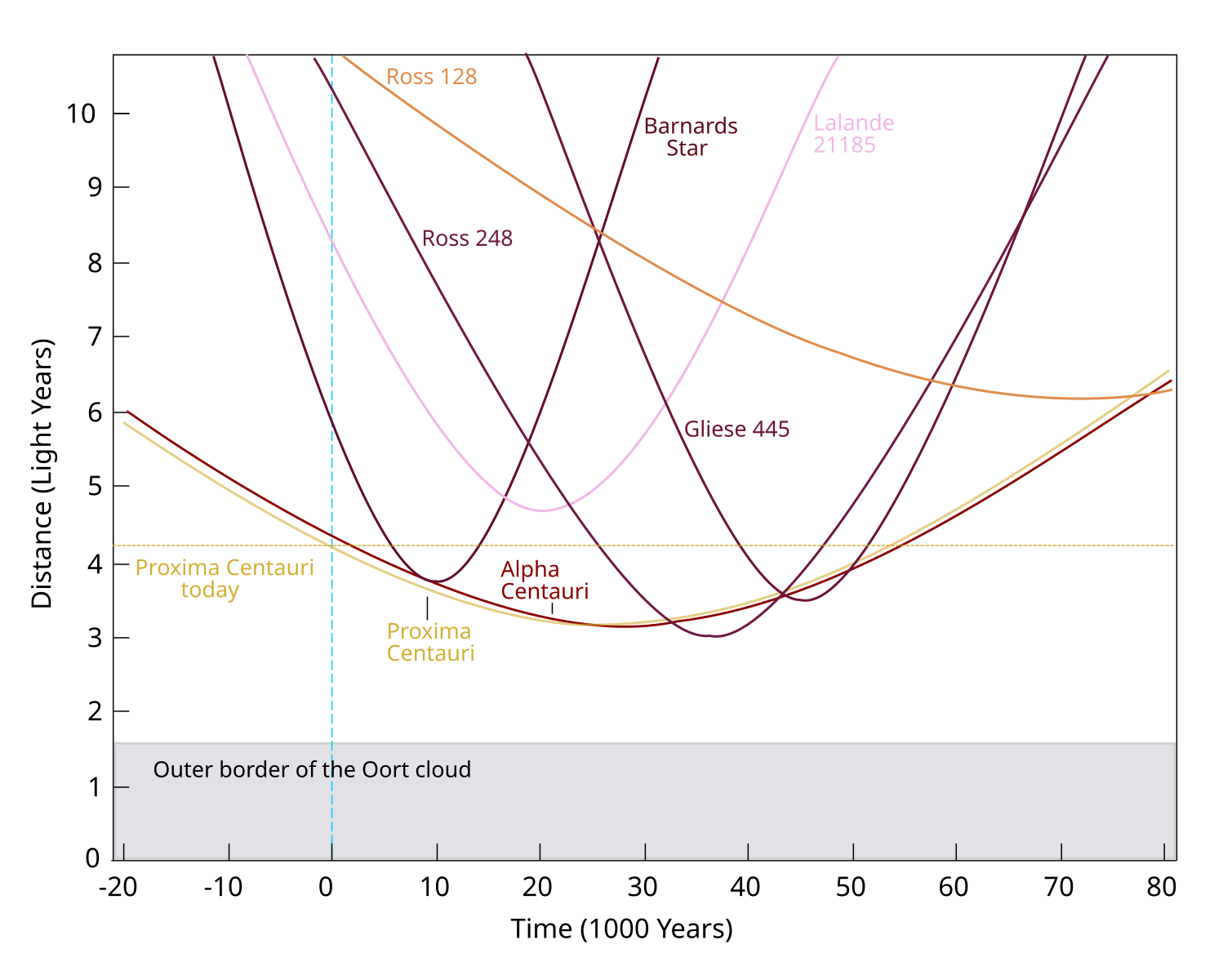John Carlos Baez on Nostr: We may think of the stars in the sky as fixed, but if we wait the closest stars will ...
We may think of the stars in the sky as fixed, but if we wait the closest stars will eventually drift away - and other stars will come closer. This graph shows how that works. The vertical blue line is today.
Today the nearest star is Proxima Centauri, just 4¼ light years away. It's a small red dwarf with 2 or 3 planets. Unfortunately it shoots out big X-ray flares. It orbits two other stars: one, called Rigil Kentaurus, is a bit bigger than the Sun, while the other, Toliman, is a bit smaller. They orbit each other every 79 years, while Proxima Centauri orbits both of them every 500,000 years.
But if we wait, various other stars will drift by and temporarily become closer!
Barnard's Star will swing by and tie Proxima Centauri for a short time 10,000 year from now. It's just a bit bigger than Proxima Centauri, and it has one planet.
Ross 248 will be the closest star for about nine millennia starting 30,000 years from now. It's another red dwarf, with huge starspots due to its powerful magnetic field.
Then Gliese 445, another red dwarf will become the closest star for a while. During this time the Voyager 1 probe will pass within 1.6 light-years of this star.
And so it goes. I wonder when a star will get *really* close to the Sun, like 1 or 2 light years? This could shake up the Oort cloud, the cloud of icy bodies in our solar system that stretches out for 1.5 years. Then we'd get lots of comets!

Today the nearest star is Proxima Centauri, just 4¼ light years away. It's a small red dwarf with 2 or 3 planets. Unfortunately it shoots out big X-ray flares. It orbits two other stars: one, called Rigil Kentaurus, is a bit bigger than the Sun, while the other, Toliman, is a bit smaller. They orbit each other every 79 years, while Proxima Centauri orbits both of them every 500,000 years.
But if we wait, various other stars will drift by and temporarily become closer!
Barnard's Star will swing by and tie Proxima Centauri for a short time 10,000 year from now. It's just a bit bigger than Proxima Centauri, and it has one planet.
Ross 248 will be the closest star for about nine millennia starting 30,000 years from now. It's another red dwarf, with huge starspots due to its powerful magnetic field.
Then Gliese 445, another red dwarf will become the closest star for a while. During this time the Voyager 1 probe will pass within 1.6 light-years of this star.
And so it goes. I wonder when a star will get *really* close to the Sun, like 1 or 2 light years? This could shake up the Oort cloud, the cloud of icy bodies in our solar system that stretches out for 1.5 years. Then we'd get lots of comets!
